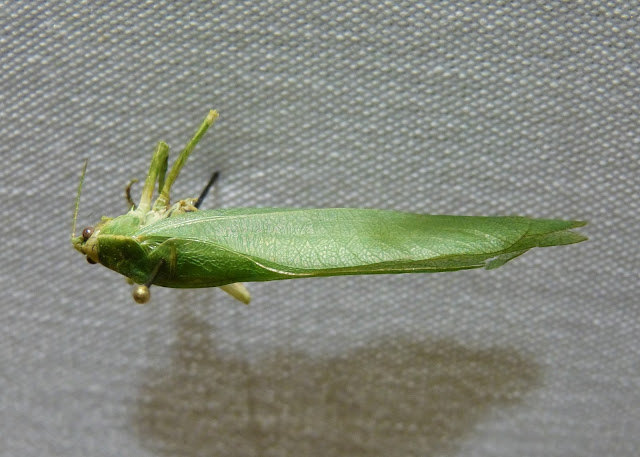Pink Katydids
Katydids were never intended to be the focus of the Insecta display. They were just one, lime-green part of a much larger whole. All I really thought of them at first, as I cautiously arranged the dozens of various insects, was, "Wow, these are very green."
After just scratching the surface of katydid life, it was confirmed that they certainly are...very green. But sometimes they are orange or yellow. And occasionally, katydids are even pink. From that point in my insect investigation, katydids had won my full attention.
Most of us are familiar with albinism--the genetic condition that leads to the notorious white-furred, red-eyed deer we've probably seen or at least heard about in our respective communities. These animals appear this way because they have no melanin that gives them their usual pigmentation, or color.
At the Museum we also try to familiarize inquisitive visitors with leucism. One of our popular deer mounts is leucistic, and while he has lost some pigmentation, other parts of the fur are still the typical brown color. Leucism isn't a full loss of pigmentation, but enough that it's noticeable.
Thanks to katydids, I'm now familiar with erythrism too. This is what causes some katydids to look pink, or the orange of a tiger's coat to appear just a bit more vibrant. Erythrism refers to the condition of unusual red pigmentation in an animal, and it can manifest as an increase in a wide range of reddish shades.
 |
| Photo: Joel Sartore, Photo Ark |
Pink katydids are not even that unusual. In fact, green is genetically the least dominant color trait of katydid species which have been studied. So why don't we see a rainbow of katydids in the wild? I'll answer that with another question. How long could a bright pink, yellow, or orange katydid hide from predators?
